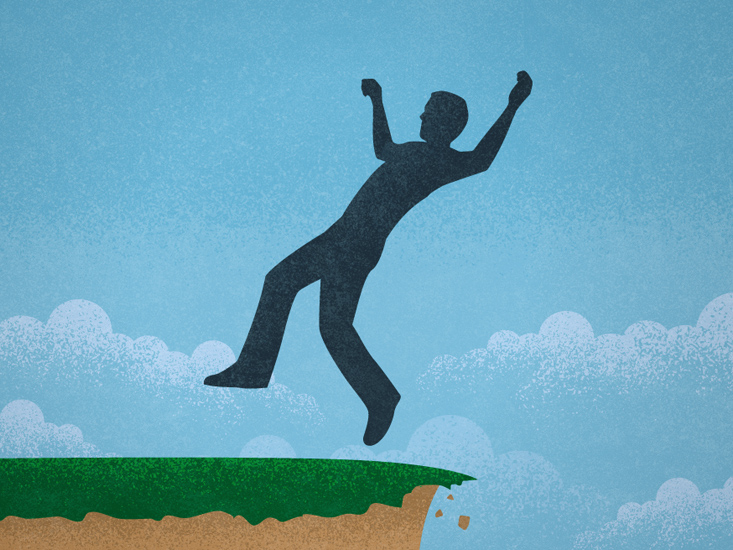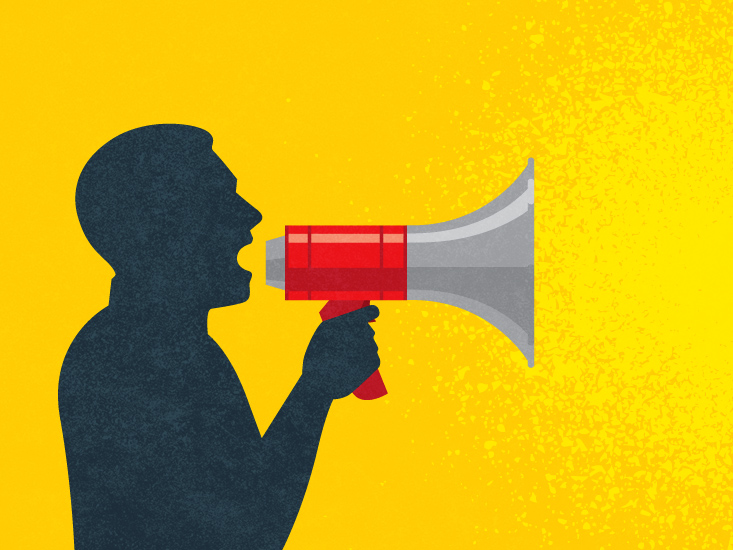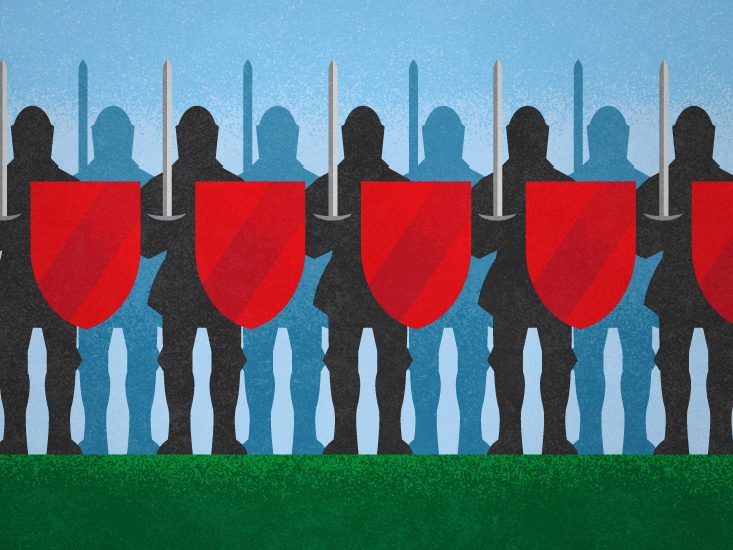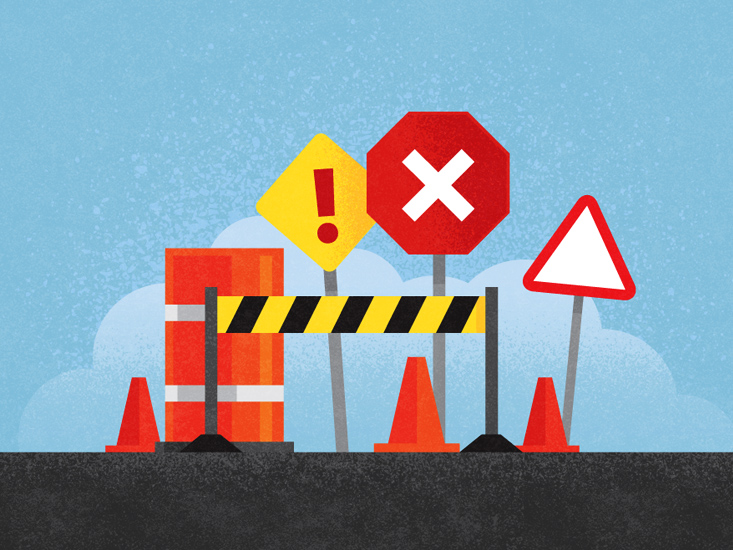There are important life events that people tend to remember. Some of them are personal, like your first kiss; others are historical, such as where you were on 9/11. I remember my first kiss, seeing John Lennon in concert, and watching a plane hit the World Trade Center. But as important as these events were, they didn’t define my life. My first panic attack, which struck on Sunday, May 21, 1972, did.
I was 20 and spending my junior year abroad in London. I woke up that morning with an impending sense of doom. My heart was racing. I felt like I couldn’t breathe. I shouted out to my roommate, “Help me, help me, I am dying!” He laughed, “Really? What are you dying of?” I had no answer. “I don’t know what’s happening to me,” I told him. “Call an ambulance.”
I know what you’re thinking. I was having a bad trip or a nightmare, or possibly both. But I was wide awake. I was not on any drugs or medication. That was my first panic attack, but not my last one. From that day on, like Bill Murray in the movie Groundhog Day, I was stuck in a recurring pattern of panic.
I am one of 40 million American adults who suffer from anxiety disorders, according to the Anxiety and Depression Association of America (ADAA). But, in many ways, our world is less dangerous and more certain and controlled than ever before. So what makes these millions of humans, who constitute 18 percent of the U.S. population, deeply worried?

Even before you are conscious of a feeling of fear, your amygdala has sent an emergency alert to its neighbor, the hypothalamus. The hypothalamus will then inform the rest of your body by stimulating nerve endings to release two hormones that also act as neurotransmitters: epinephrine, also known as adrenaline, and norepinephrine. Adrenaline and norepinephrine put your body into fight or flight mode: They increase heart rate, dilate arteries to accelerate delivery of blood to muscles, slow down the digestive system to conserve body energy, and nudge the liver to release glucose for more energy.
Illustrations by Matt StevensJeffrey P. Kahn, a psychiatrist and the author of Angst: Origins of Anxiety and Depression, writes that a life of constant vigilance and anxiety helped protect our ancestors from the threats of the wild. According to Kahn, “humans have an evolutionarily inherited set of herd-like biological instincts which try to coax us back to the herd. Among them are panic anxiety which calls us to return to the herd when we stray geographically or emotionally and social anxiety which calls us to lower our social rank in response to otherwise gratifying recognition.”
Emerging genetic research supports the evolutionary origins of anxiety. Variations in the ratio of short to long copies of the serotonin transporter gene have been found to shape the social behavior of rhesus macaque monkeys. Monkeys with one short copy and one long copy exhibited higher fear and risk aversion in response to social stimuli. In humans, the same gene was observed to affect the activity of the amygdala, the part of the brain involved in threat detection. “We have found very similar gene-based disruptions in social rewards shared by monkeys and by humans,” says Michael Platt, who directs the Duke Institute for Brain Sciences in Durham, N.C., and is an expert in neuroeconomics.
“A life of constant vigilance and anxiety helped protect our ancestors from the threats of the wild,” writes Kahn.
The use of anxiety to maintain social order was essential to the collective action that allowed us to thrive in the wild. We can still see the relationship between rank and anxiety today, everywhere from the modern office to modern-day tribes. Djuke Veldhuis, an anthropologist at Cambridge University who has lived with and studied tribes in Papua, New Guinea, explains that a tribesman’s relation to the clan’s chief was of paramount importance. “The people who felt they were not socially accepted became quite anxious,” she says. “The more socially accepted they felt, the less anxious they were.”
The beginnings of our capacity for anxiety are rooted in our survival tactics. But as our lifestyles moved further from nature, the foundations of our anxiety changed. Kahn believes that the technology, independence, equality, and creativity required for the advancement of civilization stimulated our biological anxiety responses. “Essentially people had to break away from their herd instincts in order to advance,” he says—and such independence came at a price of anxiety. “People coped with the new uncertainty brought by technological advances through shamans, religion, government, and law.”

During the Middle Ages, such coping mechanisms, in particular religion, became pervasive. People believed that soul-based illnesses were caused by supernatural demons or by direct punishment from God. “In medieval times anxiety was not only rampant, but it was viewed in terms of sin, redemption, and the final judgment,” says psychiatrist George Makari, who teaches at Weill Cornell Medical College in New York. “People knew that if they committed sins they were going to hell and would suffer for eternity.” In fact, the Latin anxietas, from which the modern word is derived, referred to the feeling of relief from anxiety one received after the forgiveness and absolution of confession.
I could see why my ancestors deemed anxiety attacks punishments from God—the classic symptoms include a sense of impending doom, fear of loss of control or death, rapid heart rate, trembling, shortness of breath, and hyperventilation. They come on very suddenly, often without any warning. It took me 11 years to be diagnosed with panic disorder, and eight years to find a drug that would stop the attacks. During that time I saw doctor after doctor who could find nothing wrong with me physically. I was tested for low blood sugar, thyroid conditions, electrical malfunctions of the heart, and even a brain tumor. When the medics ran out of tests, I was told I was a hypochondriac and given Valium—which didn’t work.
This was not the life I had expected to lead. I thought I would graduate college, become a lawyer or college professor, get married, and raise a family. I saw a clear path before me. But I realized John Lennon was right when he wrote, “Life is what happens to you while you’re busy making other plans.”
I am fortunate that my panic is now under control, thanks to medication and therapy. Nowadays, I also use the Fisher Wallace Cranial Stimulator, a small portable device that generates micro-currents of electricity to stimulate the neurotransmitters in the brain to relieve my bouts of fear. But had I lived much earlier than today, I might have been out of luck. The American Psychiatric Association did not categorize the anxiety disorder as a standalone illness until 1980. And it was only two hundred years earlier than that when anxiety started to truly decouple from ideas of sin and damnation. In a New York Times opinion piece, Makari writes that “after 1800, anxious experiences began to be considered in and of themselves.” In that century, a vocabulary of anxiety began to emerge. The French coined “angoisse,” a kind of tortured misery, while the Germans spoke of “angst,” or terrible foreboding, and the Spanish of a freaked-out breathlessness they called “angustia.” It was in 1879 that “a British doctor distinguished worry from ‘panic,’ a term derived from the story of the Arcadian god Pan, who was said to make noises in the woodlands that inspired unbridled terror,” Makari writes.

This vocabulary paved the road to scientific investigations into the roots of our anxiousness, and to modern tools for coping with anxiety that did not rely on the confessional. By the 1960s and 1970s, anti-anxiety drugs were rampant. “People took Valium and Librium in the same amounts as they take Xanax and Ativan today. The Rolling Stones even sang about it in Mother’s Little Helper,” notes Allan Horwitz, a sociologist at Rutgers University. In the 1979 film Starting Over, actor Burt Reynolds had an anxiety attack in Bloomingdale’s. When he asked if anyone had a Valium, people threw him hundreds.
Today, we are exploring new frontiers to combat our old nemesis. Platt expects that anxiety will be treated using personalized medicine. The idea is to use emerging neurobiological and genetic testing to determine exactly what kind of anxiety disorder a patient is suffering from. “And,” Platt says, “if we could understand more about how certain systemic or invasive treatments work at the neurobiological level, we might be able to devise behavioral or cognitive, or even game-based approaches that elicit the same biological process, thereby delivering ‘gentler’ therapy.” Kahn, too, notes that researchers are developing medications that are more fine-tuned to specific anxiety receptor subtypes in our brains.
In our battle against the angst, we continue trying to perfect the nonpharmacological methods—counseling and talking therapies, which range from traditional analysis to the short-term, solution-focused approach where people envision their preferred future and work to achieve it. New high-tech treatments are also emerging, such as transcranial magnetic stimulation and virtual reality therapy.
The American Psychiatric Association did not categorize the anxiety disorder as a standalone illness until 1980.
We may deserve a pat on the back for our scientific and technological prowess in dealing with anxiety—but do we really live in such a stressful world? You’d be forgiven for thinking so. My children have seen television coverage of the terrorist attacks on the World Trade Center, the shootings at Newtown and Virginia Tech, the earthquake in Haiti, and the explosions at the Boston Marathon, all in the last 12 years. Not a day passes that we don’t hear about a new tragedy.
But it might surprise you that, with few exceptions, the experts I spoke to said that ours is not a particularly stressful time. Harvard University psychology professor Steven Pinker wrote in his book The Better Angels of Our Nature: Why Violence Has Declined that we have less chance of dying a violent death today than in any other time in history. Many of our fears have calmed. Makari notes that eternal damnation is pretty hard to compete with. “We don’t think we will burn in hell for our sins,” he observes. Makari says that when his patients express concerns about terrorism and random violence, it’s usually tied to a recent news event. “Most people seek a therapist’s help for anxiety caused by marital difficulties, economic problems, and concerns about their children, all of which are related to their uncertainly about their individual future.”

So what about those horrible images of 9/11? What about the graphic shootings and natural disasters we see on TV? Don’t they cause us more anxiety than our parents and grandparents, who did not see them occurring in real time on CNN? Iain Wilkinson, a sociologist at the University of Kent in England, doesn’t think so. “The constant media exposure, the constant viewing of these tragic images helps us translate anxiety into known fear,” he says. The media can “provide us with narratives for making sense of an uncertain world.” It’s just another anxiety-coping mechanism in our proliferating arsenal.
But despite our reasonably peaceful Western lifestyle and ample anti-anxiety strategies, there’s no doubt we are an incredibly anxious society. According to the ADAA, anxiety disorders are the most common mental illness in the United States, adding more than $42 billion a year to healthcare costs. Twenty percent of American adults use anti-anxiety or antidepressant drugs—certain antidepressant meds such as Prozac and Zoloft are used to treat anxiety as well.
According to Djuke Veldhuis, our cultural standards for anxiety are constantly evolving. “Children who were described by psychiatrists as being overanxious in the 1950s are today considered to have acceptable anxiety levels,” she says. “The bar as to what is normal anxiety has been raised in today’s culture.”
The question is, why? Ian Dowbiggin, a historian at the University of Prince Edward Island in Canada, says that instead of dealing with our anxieties, we revel in them. “We have made it socially acceptable to feel anxious about our lives,” Dowbiggin says. “There’s a pill for every anxiety and doctors are happy to prescribe them to us. We praise celebrities who talk about their anxieties to talk show hosts.”

Dowbiggin thinks that the past half century of struggle to achieve psychological wellness created a culture of “therapism” that transformed our everyday emotional challenges into a certifiable mental ailment that needs to be cured. “People not only believe they need help, but have a right to it because they are suffering from a treatable medical condition,” he says. Even less developed cultures are beginning to follow our Western mental illness trend, Dowbiggin observes. “We are quickly becoming a global psychiatric village.”
Dowbiggin also attributes the rise in anxiety to the rapid transformation of modern society. He calls it a “tragedy of our postmodern age,” where increasing virtual communication leads to social disconnect. The invention of the printing press in the 1400s helped spread learning and collaboration with one’s peers, while the Internet and social media left teenagers with great uncertainty and unhappiness, he points out. “Social media has resulted in young people not knowing where they stand with their peers—their esteem goes up and down based on Facebook status updates,” he says.
Dowbiggin thinks the past half century of struggle to achieve psychological wellness created a culture of “therapism” that transformed our everyday emotional challenges into a certifiable mental ailment.
The answer to at least some of our frets may be to simply accept uncertainty as an indelible part of our world. Andrew Gerber, a psychiatrist at Columbia University, notes that just as our brain is wired to help us when we’re faced with fearful situations, it is also wired to help us with uncertainty. “Our lives are a balancing act between making decisions based on the information we have, the information we don’t know, and our desire to make sense out of the world around us,” he says, adding that the better we make peace with life’s uncertainties, the better off we are. “The biggest mistake people make is not to accept uncertainty.”
I worry about what’s to come. I am divorced and I live alone. I am on a significant and involved plan of treatment for my panic attacks. What if my medication stops working? What if I fail to respond to my transcranial therapy? This uncertainty about my future makes me quite anxious. Not a good thing for a person who has an anxiety disorder. But maybe the best thing I can do is to not worry about being worried. One certain thing about uncertainty is that it’s here to stay.
David Levine (@Dlloydlevine) has written for Scientific American, the Los Angeles Times, Good Housekeeping, BioTechniques, and Robotic Trends, and was a contributing editor at Physician’s Weekly for 10 years. He is co-chairman of Science Writers in New York (SWINY).
Caption text by Yvonne Bang.






























